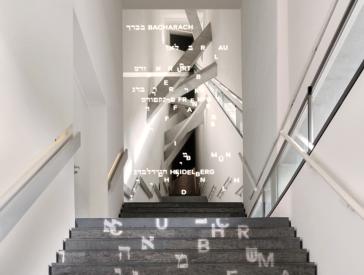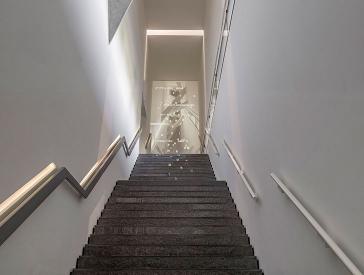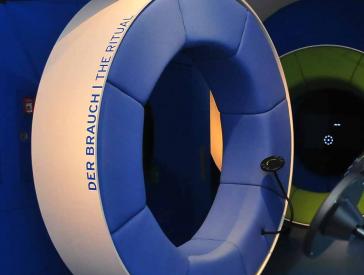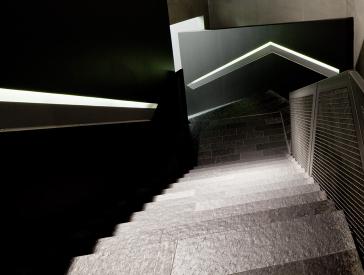A Journey through German Jewish History
The First Permanent Exhibition of the JMB 2001–2017
Since August 2020, the Jewish Museum Berlin has a new core exhibition. Our historical permanent exhibition from 2001 to 2017 examined Jewish culture in Germany, relations among Jews, and relations between Jews and Christians, or, in a more secular age, between Jews and non-Jewish Germans, featuring images, texts, artworks, everyday objects, media stations, and interactive elements.
The exhibition was arranged chronologically with a different thematic focus in each period. On a tour of the exhibition, visitors learned about Jewish religious traditions and the lives of selected Jewish men and women. Many aspects were surprisingly familiar.
Past exhibition
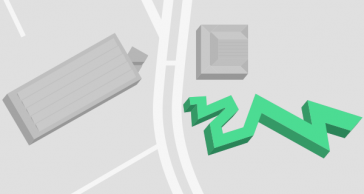
Where
Libeskind Building, permanent exhibition
Lindenstraße 9–14, 10969 Berlin
Incidentally, our permanent exhibition was less permanent than the name suggests, as it was updated on a regular basis. We incorporated new objects from our collection, revised and expanded our uses of media, and rethought and redesigned thematic areas. When updating the exhibition, we took our visitors’ suggestions and criticism into account. Our goal was to create a lively and engaging museum with something new and special for everyone. However, after 16 years, the time for a new core exhibition had finally come.
Glimpses into the Old Permanent Exhibition
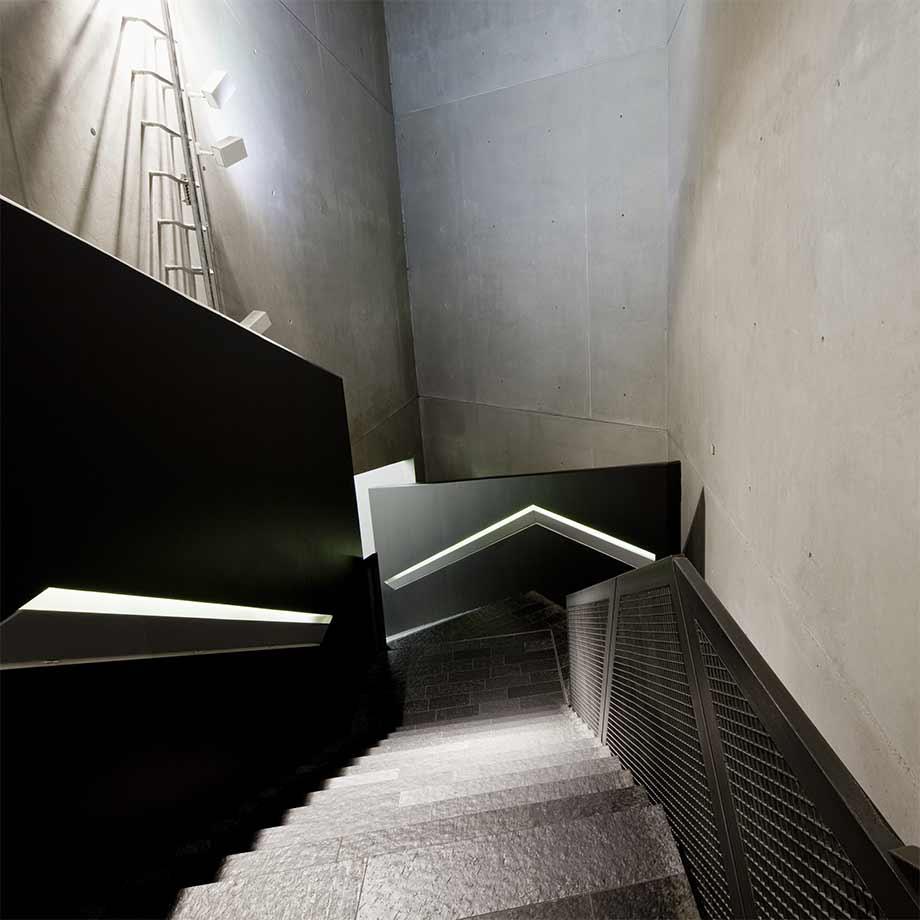
Visitors enter the permanent exhibition via a staircase leading to the lower level, where an underground pathway connects the eighteenth-century baroque building to the new structure designed by Daniel Libeskind. Two buildings that look separate from the street have been combined to form a single museum complex.
The stairs downwards strike many as dark and convoluted. They lead to an area dedicated to remembering the persecution, displacement, and annihilation of the Jews of Europe. About his architecture, Daniel Libeskind says,
“What is important is the experience you get from it. The interpretation is open.”
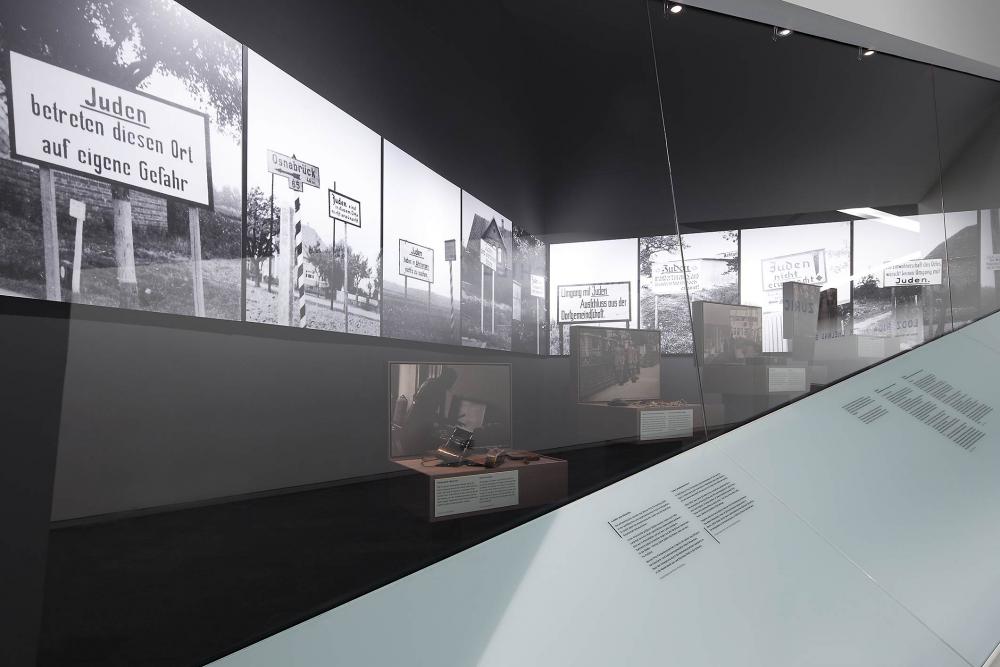
A display case in the Axis of Exile was devoted to the restrictive rules governing what refugees were allowed to take with them when they left Nazi Germany.
Four stories provided examples of the objects the emigrants were able to save. Margarete Sachs, mother of the poet and Nobel laureate Nelly Sachs, took her and her late husband’s wedding rings, which were among the few pieces of jewelry that could be taken out of the country. In 1940, Margarete and Nelly Sachs fled to Stockholm on one of the last passenger planes to leave Berlin.
The emigration stories were accompanied by photographs of antisemitic signs such as “Jews Not Welcome Here.” In 1935, Werner Fritz Fürstenberg photographed these signs in rural regions in western Germany in order to document the exclusion of Jews from German society. By that time he had already immigrated to the Netherlands himself.
To learn more about the former exhibition in the axes, visit a separate exhibition page.
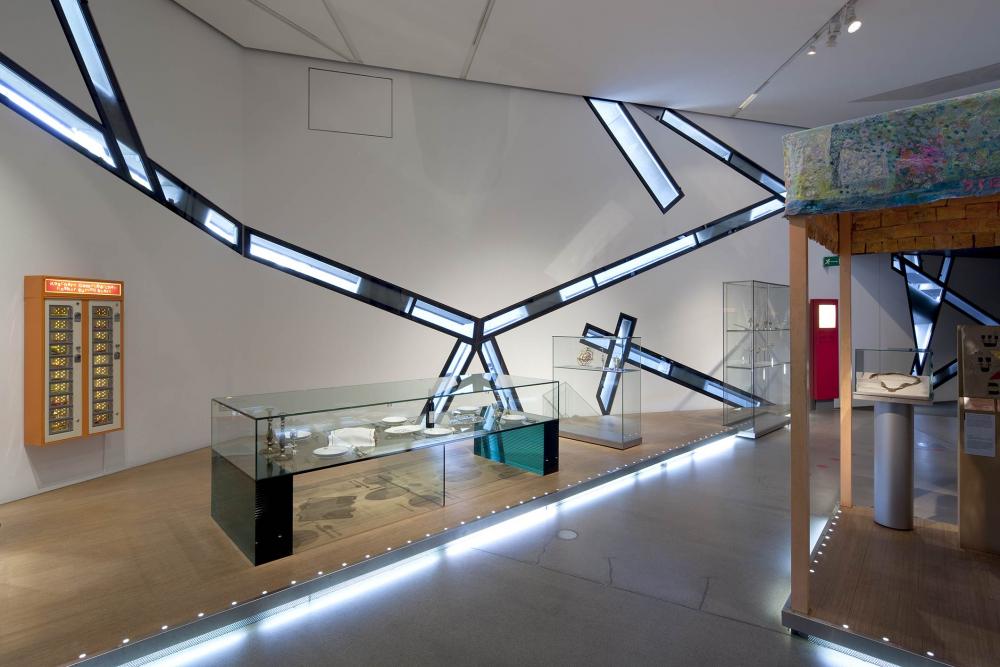
The Shabbat table on the second level of the permanent exhibition was set with the objects used to welcome Shabbat every Friday after sunset. One example is the kiddush cup. When used in Jewish households, it contains the wine over which a blessing (kiddush) is spoken every Friday and Saturday evening.
Plates and silverware could also be seen in the display case. These objects were used by their original owners on Shabbat and for other celebrations and capture the festive atmosphere in the household on Friday evening.
Incidentally, visitors could buy kosher gummy bears at a vending machine not far from the Shabbat table and learn why they are produced.
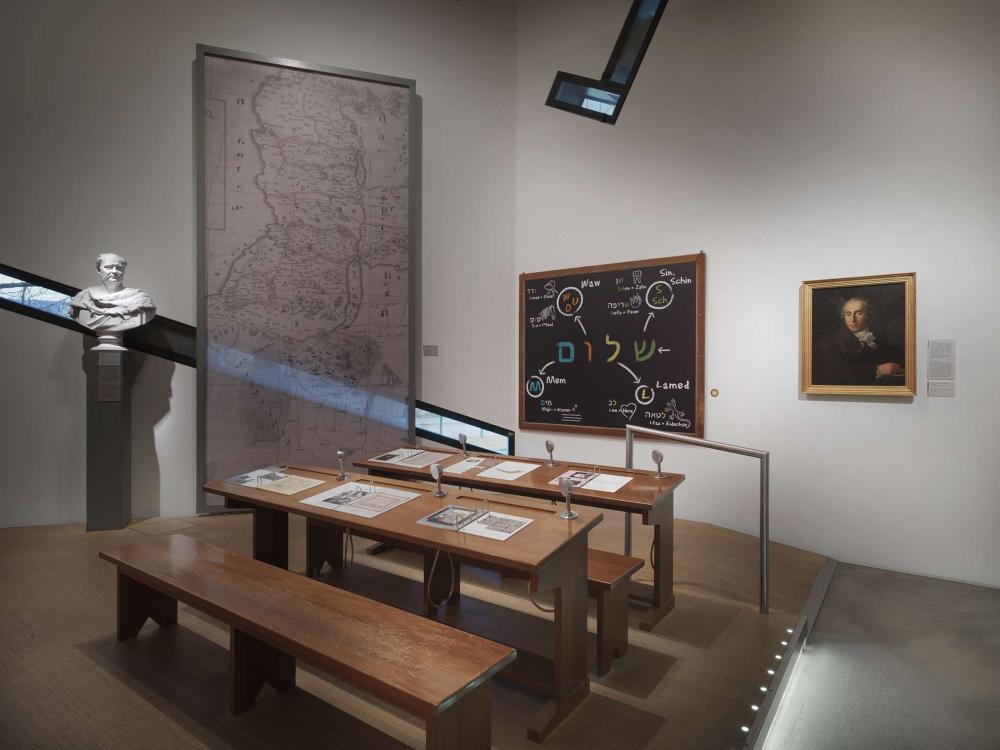
Visitors could relive their schooldays in the exhibition area on the first level set up to resemble a classroom. Taking a seat at one of the desks, they could discover what Jewish students learned in the past and present. Primers and folders explained a variety of topics, including the Hebrew alphabet, the Jewish calendar, and the Jewish holidays. Many were especially designed for young visitors.
Leaving through the folders, visitors could listen to the voices of elementary school students recorded in the Heinz Galinski School in Berlin in 2001. The children told what they know about Judaism, described customs and rules, and revealed their favorite foods and their career aspirations.
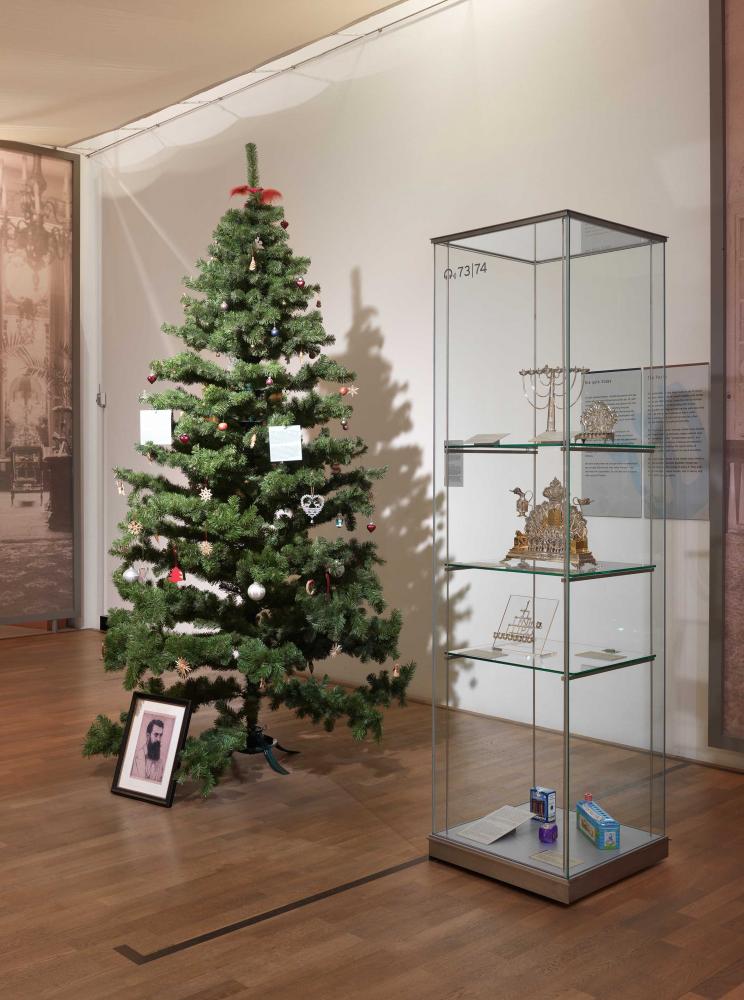
A decorated Christmas tree was displayed in the permanent exhibition in both summer and winter. Located in the section devoted to family life on the second level, it served as a reminder that many Jewish households had Christmas trees in the late nineteenth and early twentieth centuries.
The tree had no religious significance, but was an expression of cultural affiliation. Christmas was celebrated as a German family celebration. In the exhibition visitors would also learn why a picture of Theodor Herzl, of all people, had been placed under the tree.
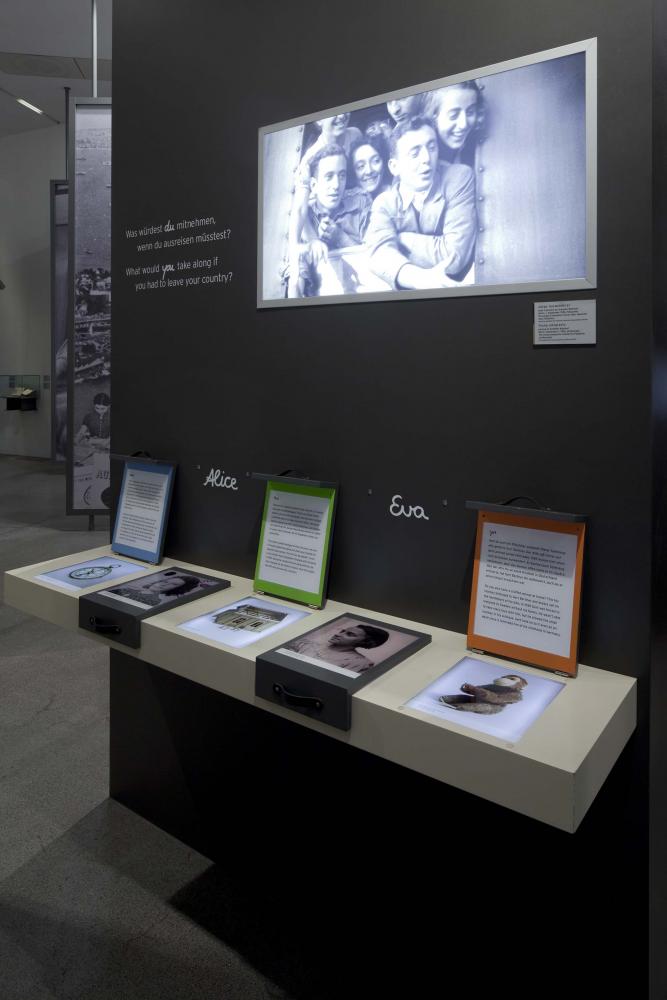
This section focused on the stories of Jewish children who emigrated after 1933 and the objects they took with them. It poses the question, “What would you take with you if you were forced to leave your home?”
Alice decided to take her autograph book so that she would have memories of her school friends in distant America. Herbert regarded the voyage to the Chilean city of Valparaiso as a “great adventure” on which his compass would come in handy. The poem Eva received from her father expressed a hope shared by many emigrants – to escape discrimination:
“The Old World has disappointed us
For you, a new life!”
The exhibit was designed for children, but was highly popular with older visitors as well.
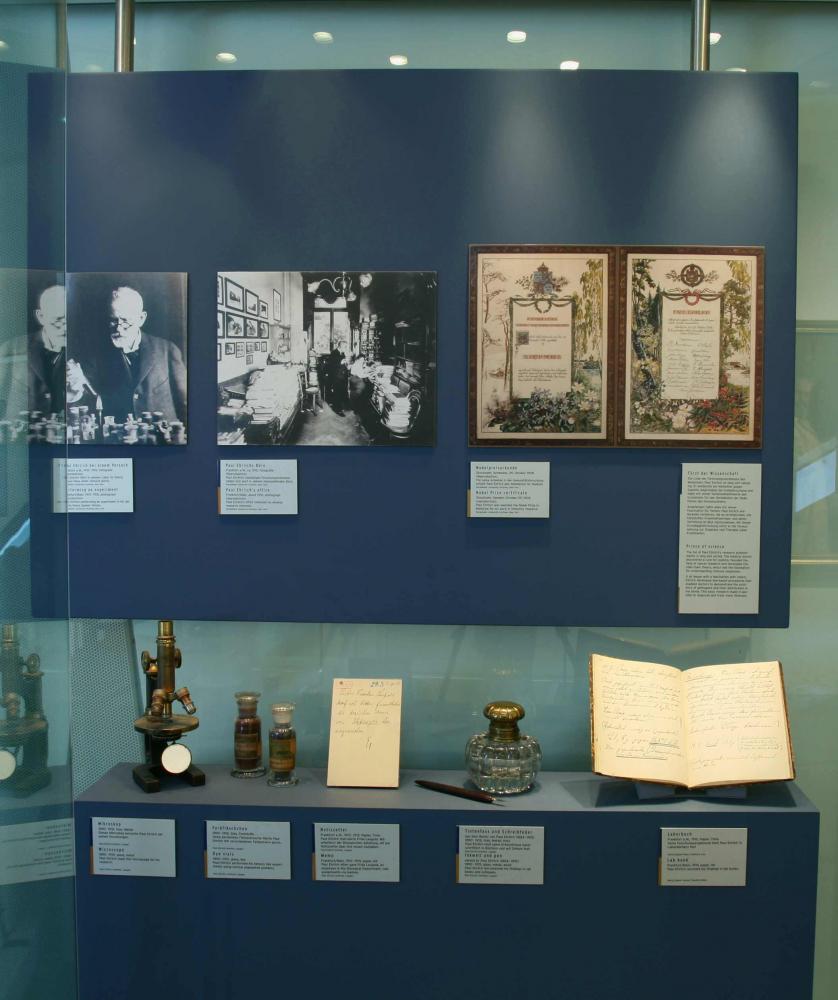
The physician Paul Ehrlich (1854–1915) was presented on the 1st floor of the permanent exhibition. The list of his research achievements is long and varied: he discovered a cure for syphilis, founded cancer research and laid the foundation for understanding the reactions of the immune system. For his findings in the field of immune research, he received the Nobel Prize for Medicine in 1908.
The showcase displayed objects from his possession: his microscope, his pen with inkwell, and his notes. Also, color vials with which he conducted his experiments that made it possible to detect pathogens with the help of dyes in the blood. He thus created the prerequisite for the diagnosis and therapy of many diseases.
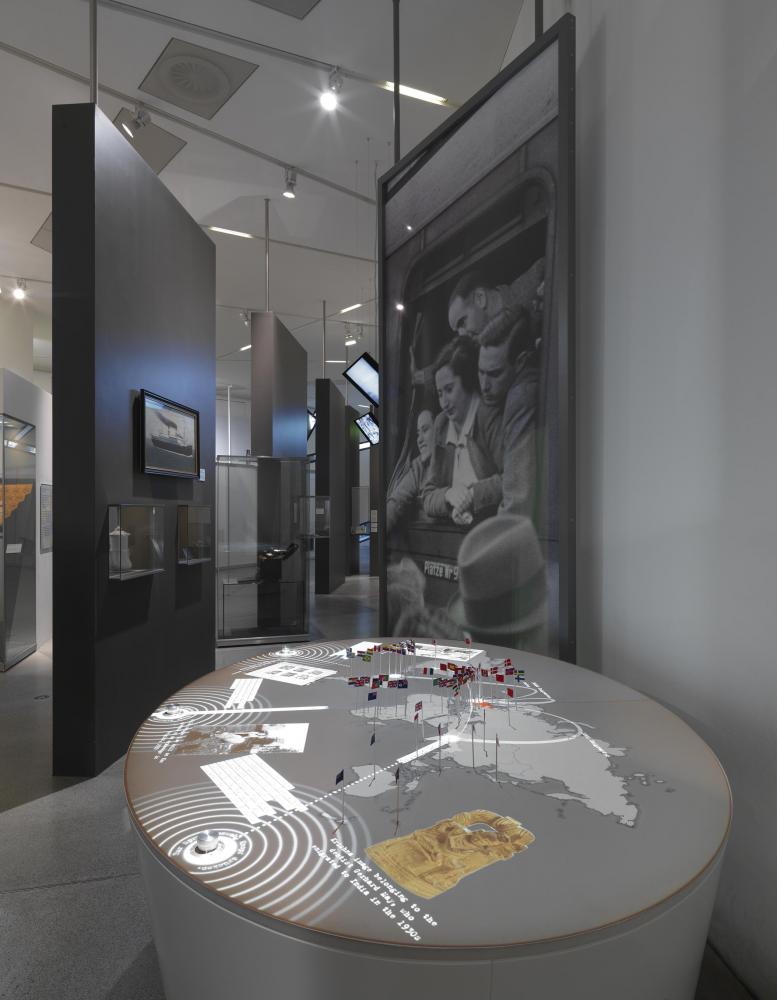
In the second-to-last section of the permanent exhibition on the first level, visitors were confronted with the possible courses of action open to German Jews after 1933. In this period, a total of 276,000 of them fled Germany to the ninety countries around the world that took in exiles.
A world map from 1939 offered the opportunity to learn more about a country of one’s choice, just selecting its national flag on the interactive table.
What local regulations needed to be considered? How did the situation change by the end of the Second World War? How many Jews immigrated to each country? The world map provided information on the immigration requirements for persecuted Jews in a variety of countries.
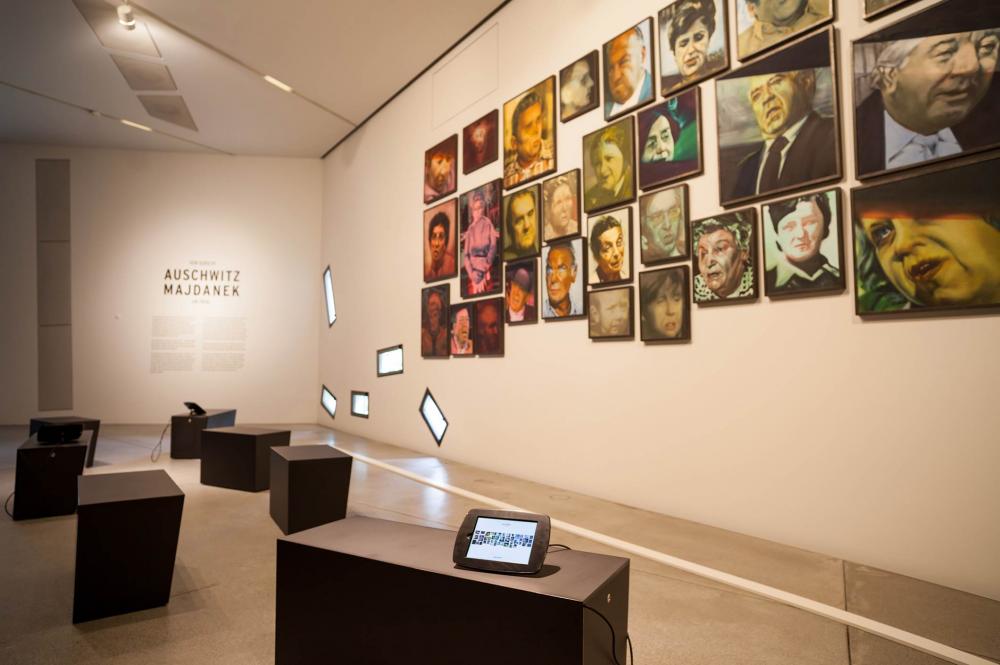
The last section of the historical permanent exhibition, located on the first level, addressed the two largest trials in Germany against the people who worked at concentration camps and death camps and these trials’ reverberation in art and media.
Forty-four oil portraits by the artist Minka Hauschild depicted the participants in the Majdanek trial in Düsseldorf. These artworks stem from the museum’s collection and are based on freeze frames from the documentary Der Prozess (The Trial) by Eberhard Fechner. In this area, visitors could also look up background information on the paintings’ subjects.
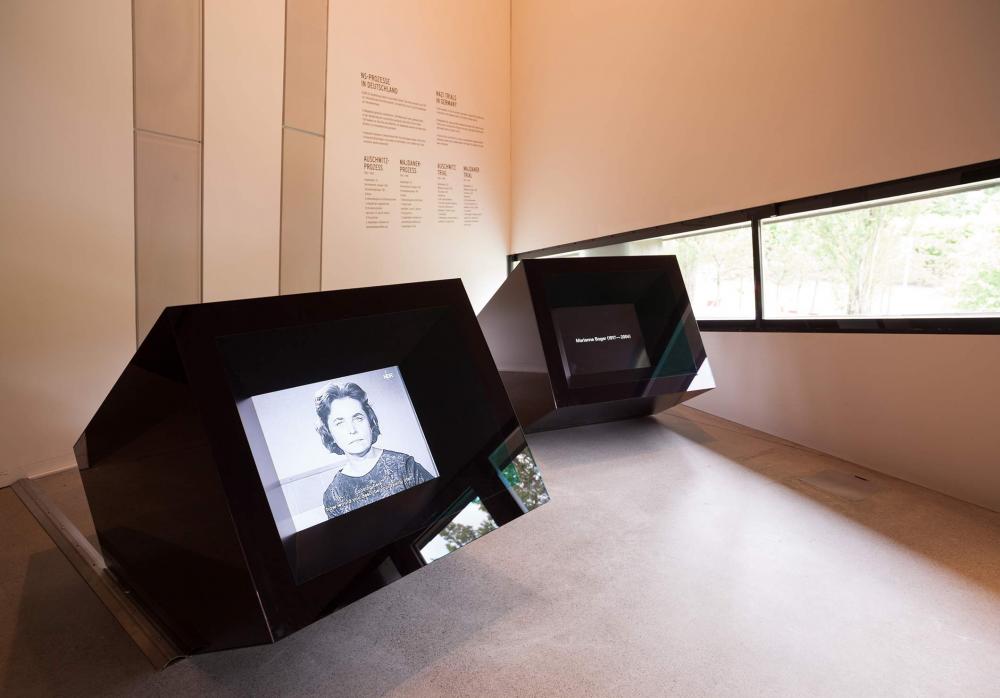
An installation of historical film clips about the Auschwitz trial in Frankfurt in 1963–1965 showed how the legal proceedings influenced perceptions of Nazi Germany. Visitors heared not only the voices of people who wanted to close the book on the Nazi past, but also comments by Fritz Bauer and Hannah Arendt, who hoped that the persecution of the Nazi criminals would educate the German public about its history.
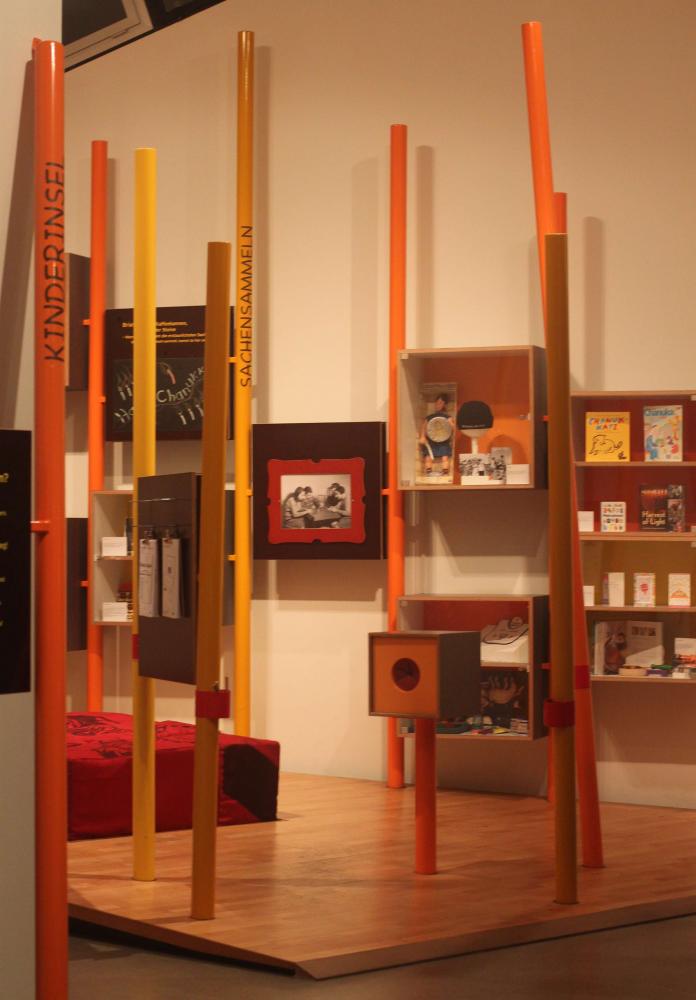
The colorful display cases featured mini-exhibitions on rotating topics, such as the major Jewish holidays and dietary laws. Sometimes the objects recounted a moment of history, from Levi Strauss’s invention of blue jeans to the ocean voyage of Fritz Freudenheim, who was forced to flee Germany at age twelve in 1938.
Hands-on "touch-and-feel" boxes containing objects from different areas of Jewish life invited children to explore. There was also a giant puzzle made of blocks that double as seats. Anyone who liked to enrich our collection with a handmade picture had a chance to do so there.
The Collaborators on Our Permanent Exhibition
The Jewish Museum Berlin’s permanent exhibition Two Millennia of German Jewish History was supervised and further developed in matters of science, organization, and restoration by Barbara Decker, Gelia Eisert, Daniel Ihde, Maren Krüger, Cilly Kugelmann, Stephan Lohrengel, Androniki Paliompei and Katrin Strube.
Exhibition technology: Support and further development by Leitwerk, Berlin
| Permanent Exhibition | Würth & Winderoll, Seefeld (design) |
|---|---|
| "A Thousand Years Ago" | The multimedia presentation "A Thousand Years Ago" in the "World of Ashkenaz" exhibition segment was developed in cooperation with the Department for CAD in Architecture at the Technical University Darmstadt and Musion, In 2010, Architectura Virtualis and the Information and Communication Technology Department of the TU Darmstadt revised the 3D modelling and film Whitevoid, Berlin undertook the programming and installation of the media technology |
| The digital Talmud | The digital Talmud in the "World of Ashkenaz" exhibition segment was created in cooperation with School of Arts in Berlin, and ART + COM. |
| "Matters of Faith" | The design of "Matters of Faith" was undertaken by gewerk, Berlin buchstabenschubser, Potsdam (films). |
| "Court Jews" | Duncan McCauley, Berlin (design) |
| "Both Germans and Jews" | Bertron Schwarz Frey, Berlin (design) cooperation with the Berlin University of the Arts, and Whitevoid, Berlin (multimedia picture book) Whitevoid, Berlin (listening table and interactive photo album) |
| "Berlin, Berlin" | The display cases that feature Leo Arons, Magnus Hirschfeld, Fritz Haber and Albert Einstein were designed by eckedesign, Berlin. |
| Children’s Island | gewerk, Berlin (design) |
| "On Trial: Auschwitz / Majdanek" | Holzer Kobler Architecturen (design) in cooperation with TheGreenEyl, Berlin (film installation on the Auschwitz trial) |
| "Simple as That" | s t e c h e r zeichen und räume, Götzis/Österreich (design) |
